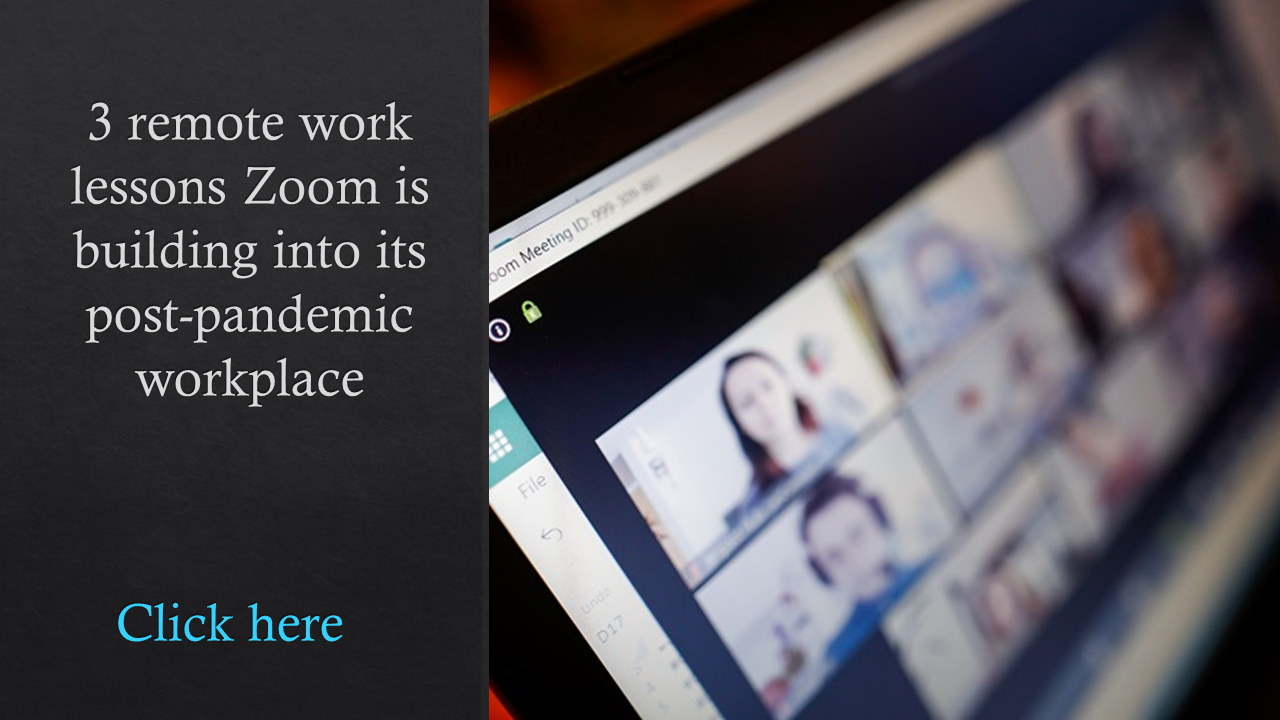Just two months into the pandemic, Facebook CEO Mark Zuckerberg made the company an early adopter of long-term remote work–pledging to allow employees to work from home through summer 2021 and predicting that, within five to 10 years, about half of its workforce could be working remotely. That forecast became more solidified, and expansive, over the following year, with the company ultimately announcing last month that nearly all employees would have the option to request permanent remote status.
To make that a reality, the tech giant has invested significant back-end work to formalize its approach to remote work–from new policies to tech adaptations. And, in charge of it all, a new position: Director of Remote.
Annie Dean, who assumed the role at the end of 2020, recently spoke at the virtual REMOTE by GitLab, where she shared how Facebook is pivoting to become a remote-first company.
Betsy Bula, all-remote evangelist at GitLab, advises employers struggling to transition to remote to create a remote lead position, designed for someone with “deep experience working in remote settings and leading globally distributed teams.” The role can be “dedicated to stewarding this change and examining things that impact the employee experience,” including tech tools, benefits, home office equipment, onboarding, L&D and more.

Among the tasks that Dean focused on upon her hire were developing the foundational principles of how the company views remote work–and embedding them into its strategy. First, it would be a “community-first” approach. The future of work, she says, is not about “unconstrained choice,” as critics of remote work may contend; rather, the events of the past year have “opened up new ways of working that support people, teams and organizations.” By focusing on what’s best for the entire Facebook community, she says, the organization’s remote strategy can empower all three entities.
As a company that is “social by design,” Facebook needed to navigate how to build relationships in a new, virtual environment. Much of Dean’s work has centered on how to calibrate all aspects of the employee journey, starting with day one of onboarding, toward the development of new relationships. And, significant attention has been devoted to ensuring equity. “We’re looking to a future with people in the office, people remote and teams distributed at any given moment,” she says. “We need to make sure the playing field stays level and that every person can meaningfully participate.”
See also: A $30K raise or remote work forever? Employees want remote
Dean went on to spearhead a four-pronged strategy to support the rollout of long-term remote work:
- Establish common language: Dean noticed that, throughout the company–and in the wider public–people were using “remote” to mean different things. So, she developed a glossary of 20 terms related to remote work to both advance conversations and ensure the company’s systems of record were in sync. “We had to be sure our data architecture and research aligned to the strategic understanding of these definitions,” she says. One important term–cross-border remote, denoting positions that can be held by people who move across international borders–has been a particularly thorny issue, given emerging regulatory and compliance issues on this topic, she notes.
- Identify the partner teams: Dean works with at least 20 different teams–and that number is growing, she says. From folks in DEI to learning to individual managers, she’s had to understand all of the stakeholders involved in the remote strategy and develop relationships with each.
- Design the work: There are a number of “pillars” that serve as the foundation of Facebook’s remote strategy–and, Dean notes, what they look like today very well may not be what they look like in a few months. For now, one cornerstone is the operational side of things–the policies and processes that enable remote-curious employees to transition to remote-permanent. The company launched a remote request tool, built internally, that allows employees to access information–including about benefits, how their work setup will change and more–and automates request approvals. Enabling remote work across global locations is another area of focus, as are the remote employee experience and research, particularly around maximizing the value of remote meetings.
- Communication and learning: Dean says Facebook has a mantra that “everything is 1% finished.” “One of our most important messages to our people is that we don’t have all the answers,” she says, and that extends to the developing remote strategy. The company is prioritizing experimentation, iteration and learning–for all employees. “No one has a crystal ball [about how hybrid and remote work will develop in the future], but the more we lean into learning, the faster we can get to a future we can all be a part of.”
While every organization’s pivot to hybrid and remote will look different, Bula notes, managing the shift comes down to “trust, communication and company-wide support of shared goals.”
 “Remote forces you to do the things you should be doing earlier and better,” she says, “and creates discipline that will sustain your culture as you scale.”
“Remote forces you to do the things you should be doing earlier and better,” she says, “and creates discipline that will sustain your culture as you scale.”
Click here to register for the HR Tech Conference, where you can learn how other leading employers are navigating the shift to hybrid and remote work.



